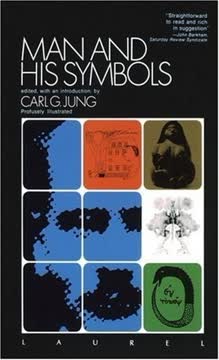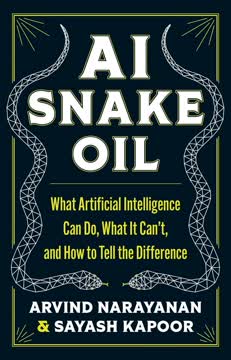Key Takeaways
1. Language is the Foundation of Human Cooperation and Survival.
Cultural and intellectual cooperation is the great principle of human life.
Cooperation is essential. Unlike animals, humans thrive through complex cooperation, a feat made possible primarily by language. Language allows us to pool knowledge, coordinate efforts, and build intricate social structures far beyond what individual strength or instinct could achieve. From avoiding a car crash due to a shouted warning to constructing global supply chains, communication is the invisible glue of society.
Beyond animal cries. While animals use limited cries, human language is infinitely flexible, allowing us to report on reports, and build layers of shared understanding. This unique capacity enables progress across generations, as knowledge from the dead (like Archimedes' physics or Keats' poetry) can be transmitted and built upon, freeing us from constantly rediscovering what others already know.
A vast network. Society itself is a vast, intricate network of mutual agreements, all achieved through language. Even in a competitive world, a huge substratum of cooperation is taken for granted, from manufacturing cars to running airlines. Disruptions like lockouts or strikes are withdrawals of this cooperation, highlighting how deeply our lives are woven into linguistic agreements that ensure predictability, peace, and freedom.
2. Words are Maps, Not Territories: Distinguish Symbols from Reality.
The symbol is not the thing symbolized; the word is not the thing; the map is not the territory it stands for.
The symbolic process. Humans uniquely create and manipulate symbols, making anything stand for anything else by agreement. This symbolic process permeates all aspects of life, from military rank symbolized by stripes to wealth represented by paper money. Even rejecting symbols, like choosing not to wear a necktie, is itself a symbolic act.
Confusing levels. A fundamental error is confusing the symbol with the thing it represents. This "word-magic" leads to irrational reactions, like a man smashing a car that "maliciously" got in his way, or a hay fever sufferer reacting to paper roses. Prejudices, like reacting to "Jew" as if it were a fixed, negative entity rather than an individual Mr. Miller, stem from this confusion, blinding us to reality.
Navigating the verbal world. Most of our knowledge comes from words, creating a "verbal world" that should accurately map the "extensional world" of direct experience. False maps, filled with error and superstition, lead to constant trouble and maladjustment. Citizens of a modern, communication-saturated society need to be systematically aware of the powers and limitations of symbols to avoid bewilderment and manipulation.
3. Master the Abstraction Ladder: Understand How We Form Concepts.
The cow we perceive is not the word, but the object of experience, that which our nervous system abstracts (selects) from the totality that constitutes the process-cow.
Reality is flux. The universe is in constant change, and our senses are limited, meaning we never perceive anything "as it really is." When we encounter "Bessie the cow," we only experience a fraction of her dynamic reality. Our nervous systems automatically abstract, selecting features that resemble other "cows" and classifying her as such, ignoring her unique characteristics.
The abstraction ladder. This process of abstracting—leaving characteristics out—is indispensable for thought and communication. Words like "cow," "livestock," "farm asset," and "wealth" represent progressively higher levels of abstraction, each leaving out more specific details. Understanding this ladder helps us avoid "dead-level abstracting," where we get stuck at either overly specific details or vague generalizations.
Definitions are linguistic. Definitions don't tell us about things themselves, but about how people use words. To truly understand a word, we must be able to refer it down the abstraction ladder to concrete, extensional examples. Without this ability, we risk chasing ourselves in verbal circles, making meaningless noises, and losing touch with reality, as seen in academic jargon or political rhetoric.
4. Differentiate Reports, Inferences, and Judgments for Clear Communication.
Reports adhere to the following rules: first, they are capable of verification; second, they exclude, as far as possible, inferences and judgments.
Three types of statements. For effective information exchange, it's crucial to distinguish between:
- Reports: Verifiable statements about what has been seen, heard, or felt (e.g., "The car is red").
- Inferences: Statements about the unknown made on the basis of the known (e.g., "He was angry" inferred from "He pounded his fist").
- Judgments: Expressions of approval or disapproval (e.g., "It was a wonderful car").
Avoiding confusion. Confusing these types of statements leads to miscommunication and conflict. For instance, treating an inference ("Jack lied to us") as a report prevents further investigation into the actual facts. Similarly, judgments, often expressed as "snarl-words" or "purr-words," reveal the speaker's feelings but offer no verifiable information about the external world.
Impact on thought. Hasty judgments can stop thought, leading to temporary blindness and reliance on stereotypes. When we label someone a "criminal," we often cease to see the individual John Doe and instead react to our high-level abstraction. Consciously separating these three types of statements allows for more accurate evaluation, prevents premature conclusions, and fosters a more nuanced understanding of situations and people.
5. Context is King: Meaning Resides in Usage, Not Just Words.
The writing of a dictionary, therefore, is not a task of setting up authoritative statements about the “true meanings” of words, but a task of recording, to the best of one’s ability, what various words have meant to authors in the distant or immediate past.
Dictionaries record, not dictate. Dictionaries are historical records of how words have been used, not prescriptive authorities on their "true" meanings. Meanings are fluid and constantly evolving with new situations and experiences. To understand a word, we must look at its context, not just its dictionary definition.
Verbal and physical contexts. We learn word meanings from observing them in actual situations, both verbal (surrounding words) and physical (nonverbal cues). For example, learning "slice" in golf comes from observing the action and its results, not from a formal definition. Ignoring context can lead to gross misinterpretations, as when a newspaper distorts a speaker's words by quoting them out of context.
No word means the same twice. Since no two contexts are ever exactly the same, no word ever has precisely the same meaning twice. This principle highlights the dynamic nature of language and the futility of insisting on "one meaning" for each word. Accepting this variability encourages us to examine contexts automatically, leading to greater understanding and reducing needless arguments over perceived "intellectual dishonesty."
6. Recognize Language's Dual Role: Informative and Affective Communication.
The informative connotations of a word are its socially agreed-upon, “impersonal” meanings, insofar as meanings can be given at all by additional words. The affective connotations of a word, on the other hand, are the aura of personal feelings it arouses.
Beyond information. Language serves a "double task": conveying information (informative connotations) and expressing/arousing feelings (affective connotations). While reports aim for pure information, most everyday language blends these functions. Affective elements like tone, rhythm, and emotional associations are crucial for engaging listeners and building rapport.
Presymbolic uses. Many utterances are presymbolic, acting as vocal gestures to express strong feelings or maintain social cohesion, much like animal cries. Social conversation, greetings, and ritualistic language often prioritize establishing communion over conveying factual information. The words themselves may be trivial or even incomprehensible, but their affective power reaffirms group bonds.
Verbal taboos and strategies. Words with strong affective connotations, especially those related to sex, death, or money, often become taboo, leading to euphemisms. These taboos can hinder frank discussion but also serve as safety valves for intense emotions. Conversely, "snarl-words" and "purr-words" use affective power to express strong approval or disapproval, often without providing any verifiable information.
7. Beware of Intensional Orientation: Don't Confuse Words with Facts.
Intensional Orientation—the habit of guiding ourselves by words alone, rather than by the facts to which the words should guide us.
Guiding by words alone. Intensional orientation is the habit of relying solely on words and their connotations, rather than the actual facts or "territory" they represent. This leads to "maps" piling up independently of reality, creating systems of meaningless noises and fostering delusions. It encompasses errors like unawareness of context, automatic reactions, and confusing levels of abstraction.
Oververbalization's trap. When intensionally oriented, we can spin out endless discussions, essays, or even philosophies based purely on word connotations, without ever touching verifiable facts. This "circular thinking" is common in windbags and those trained in "dynamic salesmanship." It leads to "unfounded complacency" and "disillusionment" when reality inevitably contradicts our word-based expectations.
Advertising's influence. Advertising is a major cultural force promoting intensional orientation. It "poeticizes" products by investing brand names with desirable affective connotations (health, popularity, elegance) rather than providing informative facts. This creates "brand loyalty" based on emotional associations, making consumers susceptible to manipulation and less likely to engage in thoughtful, fact-based purchasing.
8. Embrace Multi-Valued Thinking: Avoid the Pitfalls of Black-and-White Logic.
Faith in reason is not only a faith in our own reason but also—and even more—in that of others.
Beyond two values. The "two-valued orientation" simplifies reality into opposing forces—good/bad, right/wrong—ignoring any middle ground. While useful in physical combat, it's primitive and detrimental for complex human problems. A "multi-valued orientation" recognizes degrees and nuances, allowing for more appropriate reactions to life's complexities.
Democracy and science. Democratic processes, with their debates, compromises, and judicial procedures, inherently rely on a multi-valued approach to reconcile conflicting interests. Science, with its precise measurements and infinite scales (e.g., temperature in degrees instead of just "hot" or "cold"), offers an "infinite-valued orientation," enabling rapid progress by adjusting actions to exact situations.
The pitfalls of debate. In emotional debates, the two-valued orientation can force opponents into extreme positions, leading to unproductive "verbal jousting." To overcome this, one should assume statements have a truth-value between 0 and 100 percent, and engage with "Tell me more." This approach fosters learning, modifies views, and builds communication lines, preventing the "closed mind" that rejects information threatening its belief system.
9. Address Cultural Lag: Adapt Institutions and Language to a Changing World.
The pressing problems of our world are then problems of cultural lag—problems arising from trying to organize a jet-propelled, supersonic, electronic, and atomic world with horse-and-buggy institutions.
Institutional inertia. Society organizes itself into "institutions"—established patterns of group behavior. People within these institutions often develop fixated ways of thinking, believing their "maps" of reality are reality itself. This "institutional inertia" causes cultural lag, where institutions persist long after their necessity has disappeared, becoming nuisances or even dangers.
The fear of change. Cultural lag stems from inertia, shortsighted selfishness, and a deep-seated fear of change. Individuals and societies, accustomed to old ways, resist adapting to new conditions, even when those conditions are technologically advanced and demand new solutions. This resistance can lead to "insoluble" problems, as seen in the arms race or persistent social injustices.
Extensional solutions. Solving problems of cultural lag requires an "extensional approach": asking "What will be the results?" rather than "Is it right or wrong?" This shifts discussion from high-level abstractions and moral indignation to verifiable facts and predictable consequences. By focusing on practical outcomes and adapting institutional habits, societies can overcome fixated reactions and achieve sensible, beneficial change.
10. Cultivate Realistic Self-Concepts: Our Internal Maps Shape Our Lives.
A map does not represent all of a territory; words never say all about anything.
Mapping ourselves. Just as we make maps of the external world, we create "self-concepts"—internal descriptions of ourselves. These self-concepts, whether realistic or unrealistic, profoundly determine our actions, choices, and overall life trajectory. An unrealistic self-concept, like believing "I'm not good at mathematics," can become a self-fulfilling prophecy, hindering potential.
The "say all" fallacy. Our self-concepts, like any map, never "say all" about us. We often conceal deeper motivations with rationalizations, believing our own incomplete self-descriptions. This self-deception prevents genuine self-knowledge and leads to emotional insecurity, guilt, and an inability to be realistic about relationships with others.
Reports over judgments. To cultivate a more realistic self-concept, we must distinguish between reports and judgments about ourselves. Changing "I am only a service-station attendant" (a judgment) to "I am a service-station attendant" (a report) removes the imposed shame and allows for self-acceptance. By becoming more extensional about our own feelings and challenging institutionalized attitudes, we gain flexibility, wisdom, and dynamic security in an uncertain world.
Last updated:
Review Summary
Language in Thought and Action is widely praised as an insightful and enlightening book on linguistics, semantics, and communication. Readers appreciate Hayakawa's clear explanations of how language shapes thought and behavior. Many consider it essential reading, particularly for its discussions on abstraction levels, prejudice formation, and effective communication. The book is lauded for its relevance to modern issues, despite being originally published decades ago. Some readers find the later chapters less focused, and a few note dated cultural references, but overall it's highly recommended for its valuable perspectives on language use.
Similar Books










Download PDF
Download EPUB
.epub digital book format is ideal for reading ebooks on phones, tablets, and e-readers.




